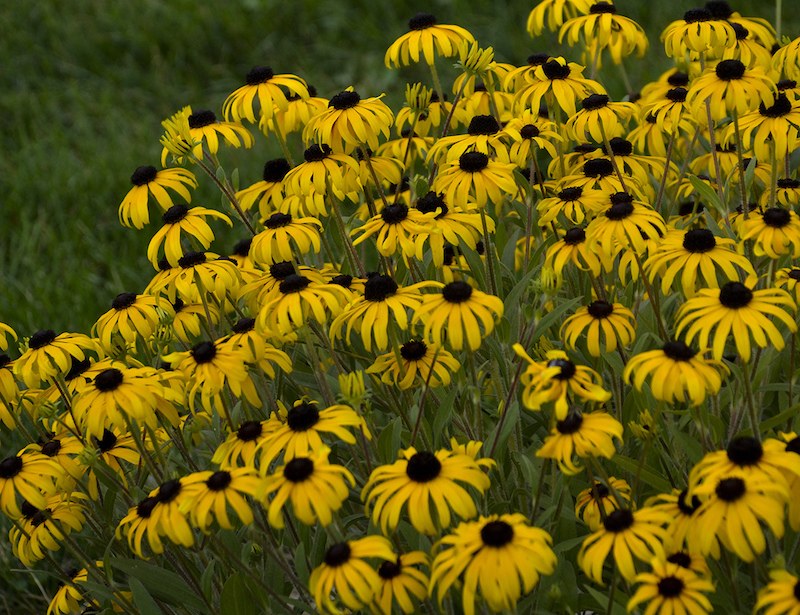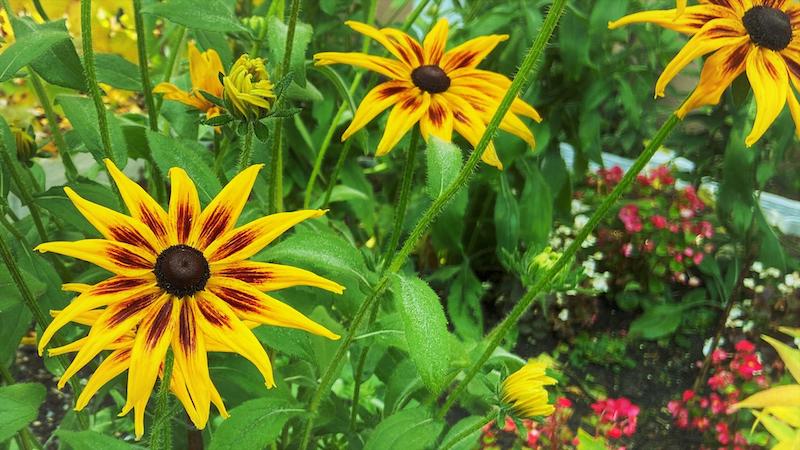Black-Eyed Susan is a reliable bloomer all through the summer months. Some of the varieties live longer than others. Rudbeckia hirta and all of its developed cultivars (‘Toto Gold’, ‘Sonora’, etc) often behave as a biennial, where they grow foliage the first season, flower the second, and die off at the end of the second summer. The perennial varieties will return year after year and bloom profusely as long as they are given full sun and minimal nitrogen. Plants that aren’t flowering can be encouraged to bloom with a variety of techniques.

Common Reasons Why Black-Eyed Susans Aren't Blooming
There are a few reasons why Black-Eyed Susans might fail to bloom well: inadequate sun exposure, spent blooms, crowded conditions, or too much nitrogen. Full sun sites can become partly shaded or even fully shaded when surrounding trees and/or larger shrubs mature and cast shade on lower-growing plants. Houses and other structures can shade flower beds for longer than expected at certain times of the year, depending on the angle of the sun.
Not deadheading Black-Eyed Susans regularly will slow down blooming. The plant will put energy into producing seed instead of producing more flowers. Keep your plant deadheaded all summer to prolong the blooming period.
Black-Eyed Susans that have outgrown their garden space or pot will need to be divided and replanted. Dividing clumps will help to reinvigorate plant growth and crowded roots. Plants growing too close together have to compete for sunlight, water, and nutrients and will struggle to produce flower stems.
Overfeeding Black-Eyed Susans will not encourage more blooms. If given too much nitrogen, the plant will produce masses of tender young foliage at the expense of flowers, making it vulnerable to attacks from sap-sucking pests such as aphids.

Pruning Black-Eyed Susans To Help Them Bloom
Deadheading can help Black-Eyed Susans continue to bloom throughout the summer months. Make sure to cut the flower stem back to the next set of leaves. This will hide any bare stems while encouraging more flowering shoots to form.
Fertilizing Black-Eyed Susans To Help Them Bloom
Large amounts of prepared fertilizer will not help Rudbeckia bloom more. Using fertilizers with high nitrogen levels will encourage foliage growth at the expense of flowers. Instead, these low-maintenance plants prefer a topdressing of compost or shredded leaves in the spring and fall, which will slowly release nutrients to the soil and roots.
Why Black-Eyed Susans Aren't Blooming
- Not planted in full sun
- Not deadheaded on a regular basis
- Needs dividing or repotting
- Overfeeding with a fertilizer high in nitrogen
 |
Author Robbin Small - Published 7-31-2022 |
